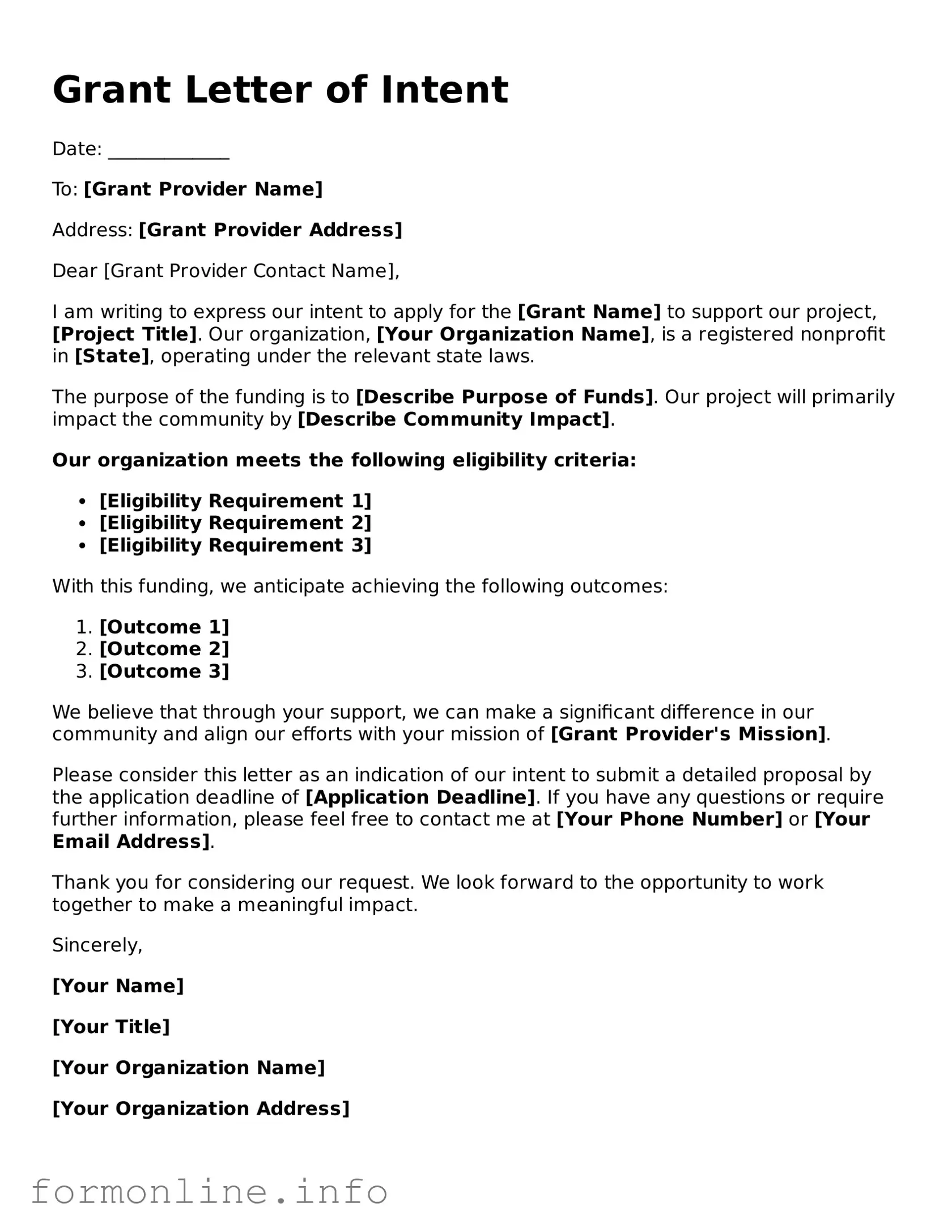Grant Letter of Intent
Date: _____________
To: [Grant Provider Name]
Address: [Grant Provider Address]
Dear [Grant Provider Contact Name],
I am writing to express our intent to apply for the [Grant Name] to support our project, [Project Title]. Our organization, [Your Organization Name], is a registered nonprofit in [State], operating under the relevant state laws.
The purpose of the funding is to [Describe Purpose of Funds]. Our project will primarily impact the community by [Describe Community Impact].
Our organization meets the following eligibility criteria:
- [Eligibility Requirement 1]
- [Eligibility Requirement 2]
- [Eligibility Requirement 3]
With this funding, we anticipate achieving the following outcomes:
- [Outcome 1]
- [Outcome 2]
- [Outcome 3]
We believe that through your support, we can make a significant difference in our community and align our efforts with your mission of [Grant Provider's Mission].
Please consider this letter as an indication of our intent to submit a detailed proposal by the application deadline of [Application Deadline]. If you have any questions or require further information, please feel free to contact me at [Your Phone Number] or [Your Email Address].
Thank you for considering our request. We look forward to the opportunity to work together to make a meaningful impact.
Sincerely,
[Your Name]
[Your Title]
[Your Organization Name]
[Your Organization Address]
